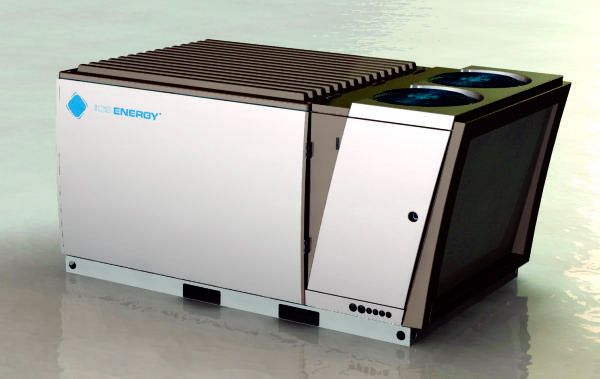New publications
"Ice bears instead of air conditioners.
Last reviewed: 02.07.2025

All iLive content is medically reviewed or fact checked to ensure as much factual accuracy as possible.
We have strict sourcing guidelines and only link to reputable media sites, academic research institutions and, whenever possible, medically peer reviewed studies. Note that the numbers in parentheses ([1], [2], etc.) are clickable links to these studies.
If you feel that any of our content is inaccurate, out-of-date, or otherwise questionable, please select it and press Ctrl + Enter.

One California company has decided to replace traditional air conditioners with more environmentally friendly and cost-effective methods. Instead of expensive and energy-intensive air conditioning systems, Ice Energy has proposed using “ice batteries” that are suitable for both residential and commercial premises.
The company's specialists called their development Ice Bears, which means "Ice Bears" in translation. According to the manufacturers, special cooling units keep the building cool and have virtually no impact on the environment, compared to conventional air conditioners.
The idea of the specialists at Ice Energy is quite simple – ice chunks are capable of cooling the surrounding air, while the system is capable of responding to changes occurring in the modern world.
According to the developers, the cooling units can provide constant and efficient cooling of the room (24 hours a day, 7 days a week), while the system allows for savings - according to preliminary calculations, on average, you can save up to 40%.
One cooling unit produces ice without consuming much energy, and then these years are used to cool the room. According to the Ice Bears manufacturers, the units can cool the air in the room for another 4 hours when the compressor is turned off, which means that the system consumes several times less energy than traditional air conditioners.
The Ice Bears use a method of changing the aggregate state of water, rather than a chemical reaction, as in most rechargeable batteries, and therefore the service life of the cooling units is several times longer. Ice as an energy carrier, unlike the electrolyte of conventional batteries, is not as toxic and is practically a "perpetual motion machine", since it does not lose its original properties over time. Chemical batteries wear out over time and become less efficient, but the Ice Bears are capable of serving without losing power with daily charging/discharging for up to 20 years.

Just like regular air conditioners, Ice Bears are installed outside the building and can be used as mini-split systems (for homes without ductwork) or combined with a duct system.
The developers emphasized that the Ice Bears system is smart, as it is designed with various functions and the ability to remotely control and monitor, which allows you to control energy use and even view graphical reports of energy costs.
The company stated that over 11 years of testing, the ice cooling units worked with an efficiency of over 98% (service life of over 34 million hours), which is more than a good result. In addition, the Ice Bears system meets all necessary standards and requirements, is easy to maintain and is more environmentally friendly than standard air conditioning systems.
Incidentally, Ice Energy has already received an order to install the Ice Bear system in more than 1,500 modules in Southern California, which will go into operation this year and should last 20 years without replacing the energy source. This order takes the company to a new level, and the use of ice in air cooling systems may become widespread.
